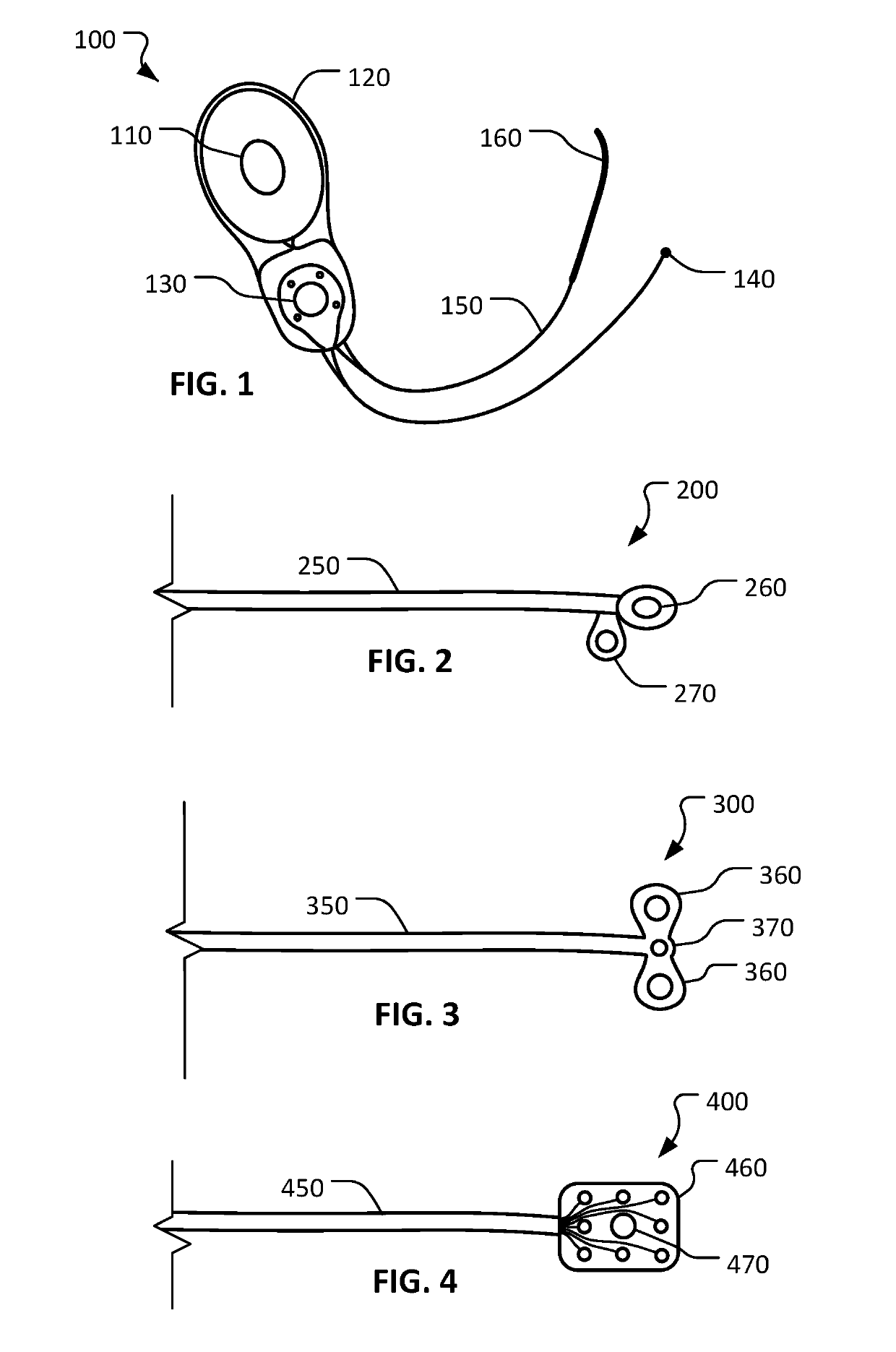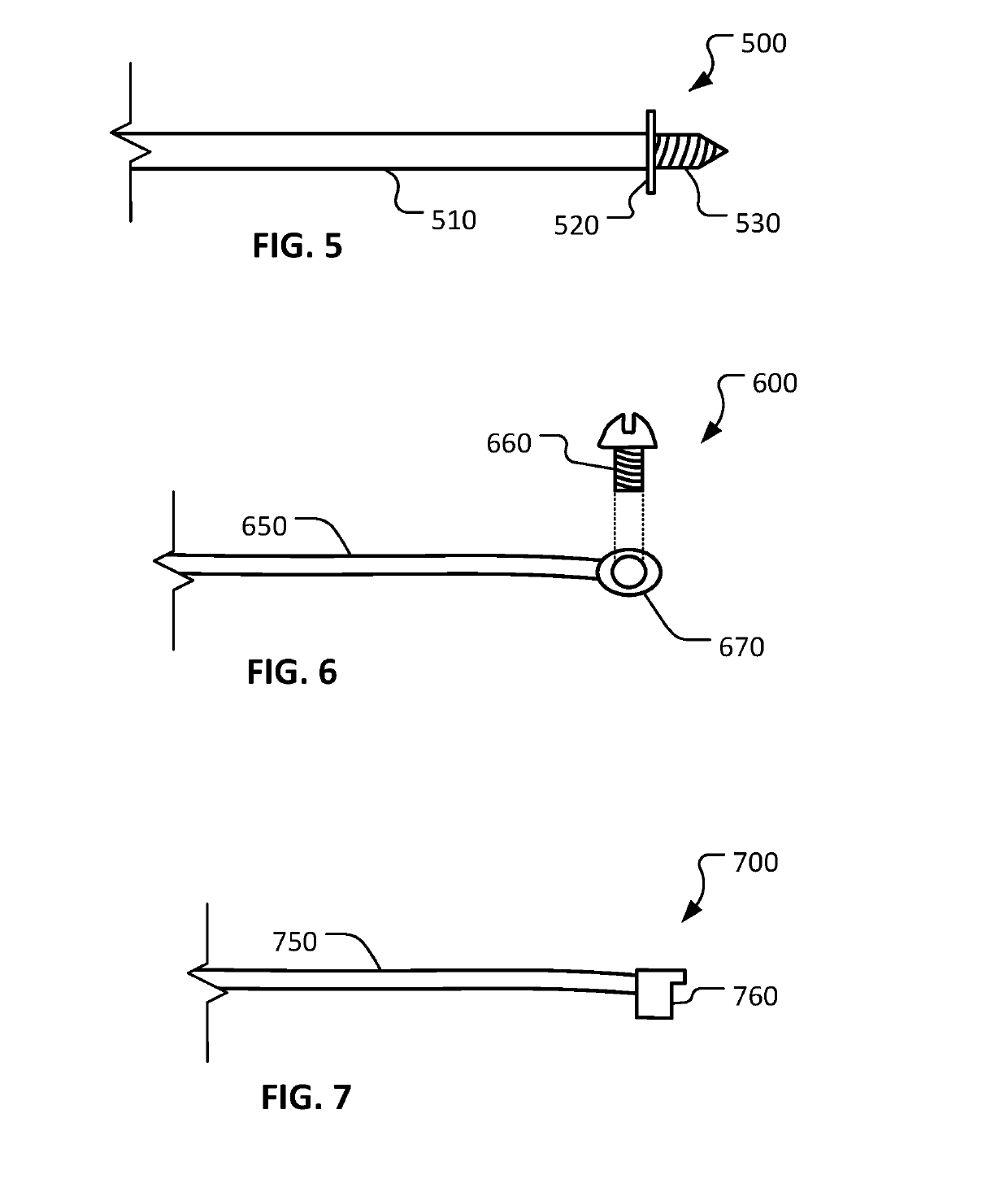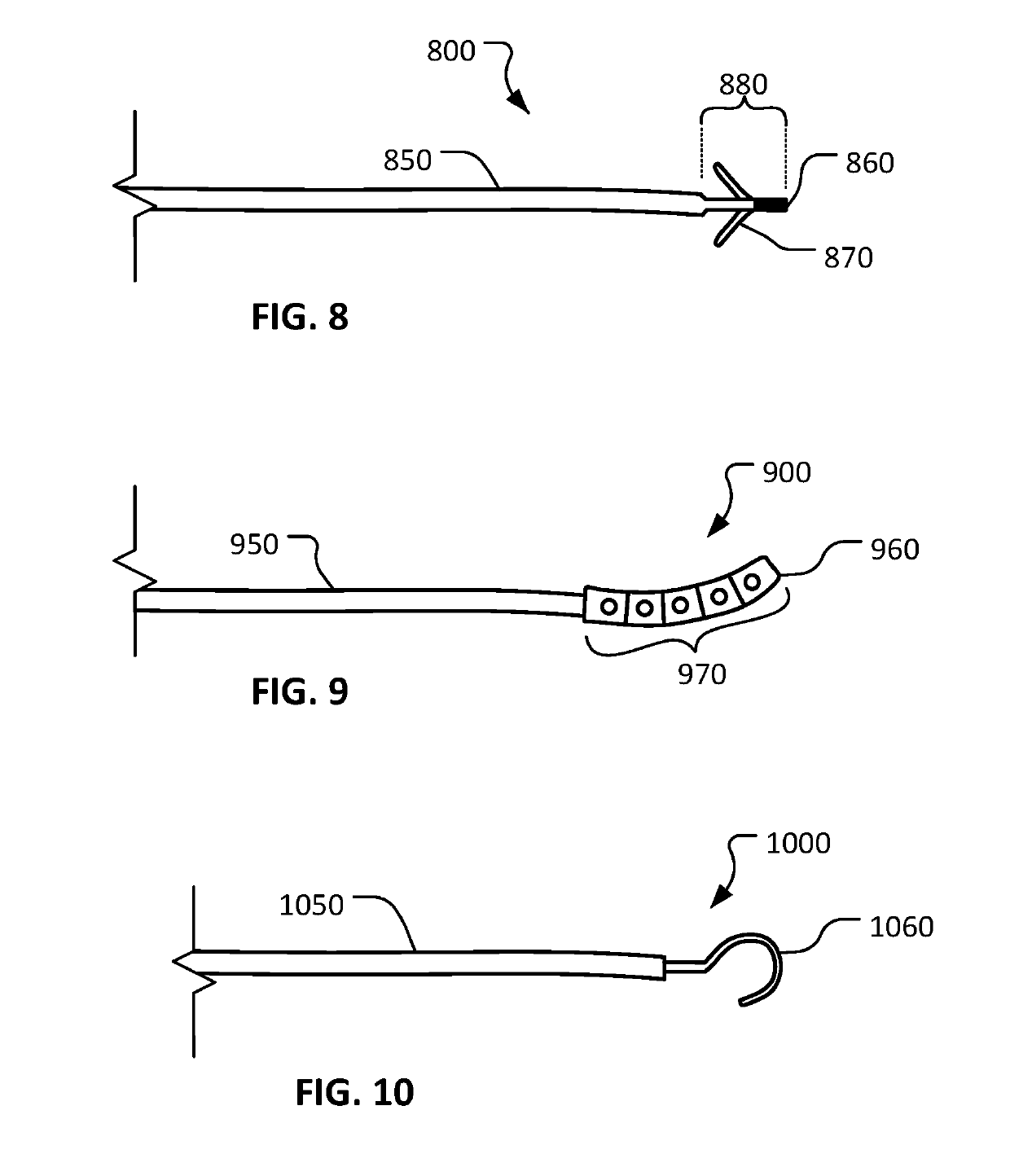Devices and methods for treating tinnitus using electrical stimulation
a technology of electrical stimulation and devices, applied in the field of devices for treating tinnitus, can solve the problems of no fda approved pharmacological therapies or surgical devices available for the treatment of tinnitus, poor attention, increased distraction, etc., and achieve the effect of broad spatial coverage of the cochlea region
- Summary
- Abstract
- Description
- Claims
- Application Information
AI Technical Summary
Benefits of technology
Problems solved by technology
Method used
Image
Examples
Embodiment Construction
[0040]This document provides devices for treating tinnitus and methods of using the devices to treat tinnitus. For example, this document provides implantable electrodes and stimulation devices for delivering electrical stimulation to the cochlear region to treat tinnitus. Cochlear surface electrode(s), endosteal electrode(s), subendosteal electrode(s), intraosseous electrode(s), or short intracochlear electrode(s) (or a combination thereof), connected to existing but modified cochlear implant receiver / stimulator technology, can provide a successful model for long-term treatment of tinnitus in a large number of patients. In some cases, patients can simply turn on the tinnitus implant when experiencing troublesome tinnitus and gain instant relief. With increasing use, it is likely many patients will enjoy lasting tinnitus suppression, hours and even days after the device is turned off (i.e., residual inhibition).
[0041]Using surface, endosteal, subendosteal, intraosseous, or short int...
PUM
 Login to View More
Login to View More Abstract
Description
Claims
Application Information
 Login to View More
Login to View More - R&D
- Intellectual Property
- Life Sciences
- Materials
- Tech Scout
- Unparalleled Data Quality
- Higher Quality Content
- 60% Fewer Hallucinations
Browse by: Latest US Patents, China's latest patents, Technical Efficacy Thesaurus, Application Domain, Technology Topic, Popular Technical Reports.
© 2025 PatSnap. All rights reserved.Legal|Privacy policy|Modern Slavery Act Transparency Statement|Sitemap|About US| Contact US: help@patsnap.com



